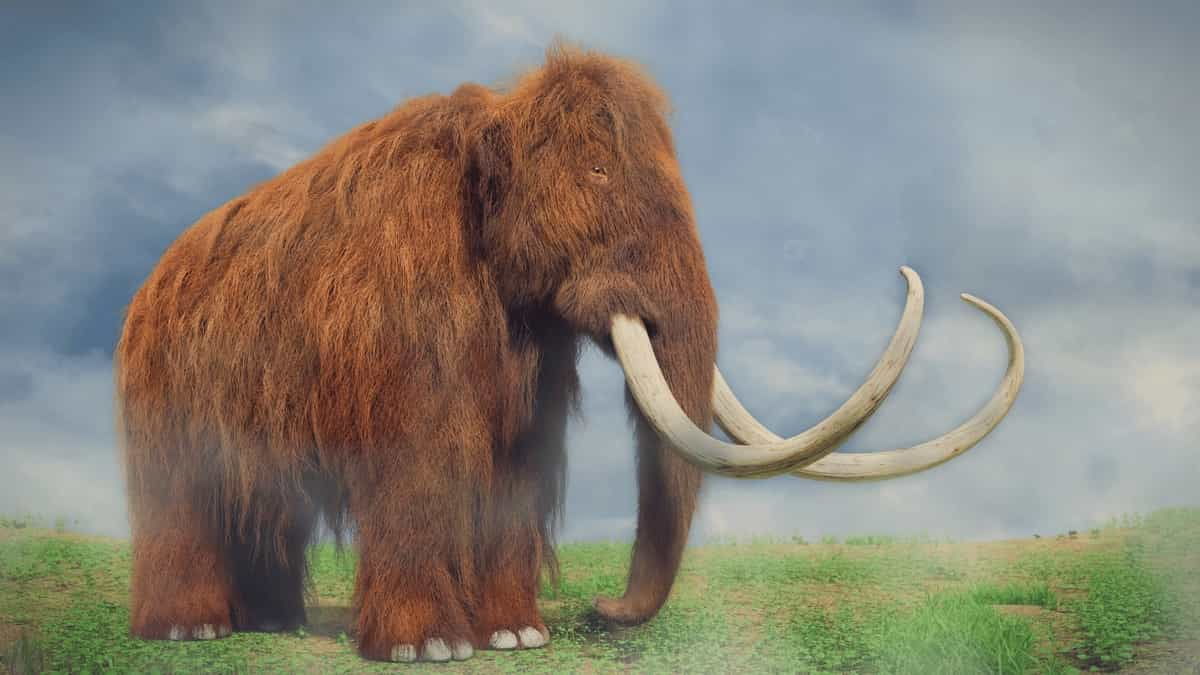Introduction
The woolly mammoth was a prehistoric elephant that lived during the Pleistocene Epoch, which began about 2.6 million years ago and ended around 11,700 years ago. They were adapted to living in cold environments and had long, shaggy hair, which gave them their name. The woolly mammoth was a herbivore and roamed across large areas of the northern hemisphere, including Europe, Asia, and North America. Unfortunately, they became extinct around 4,000 years ago due to a combination of climate change and hunting by early humans.
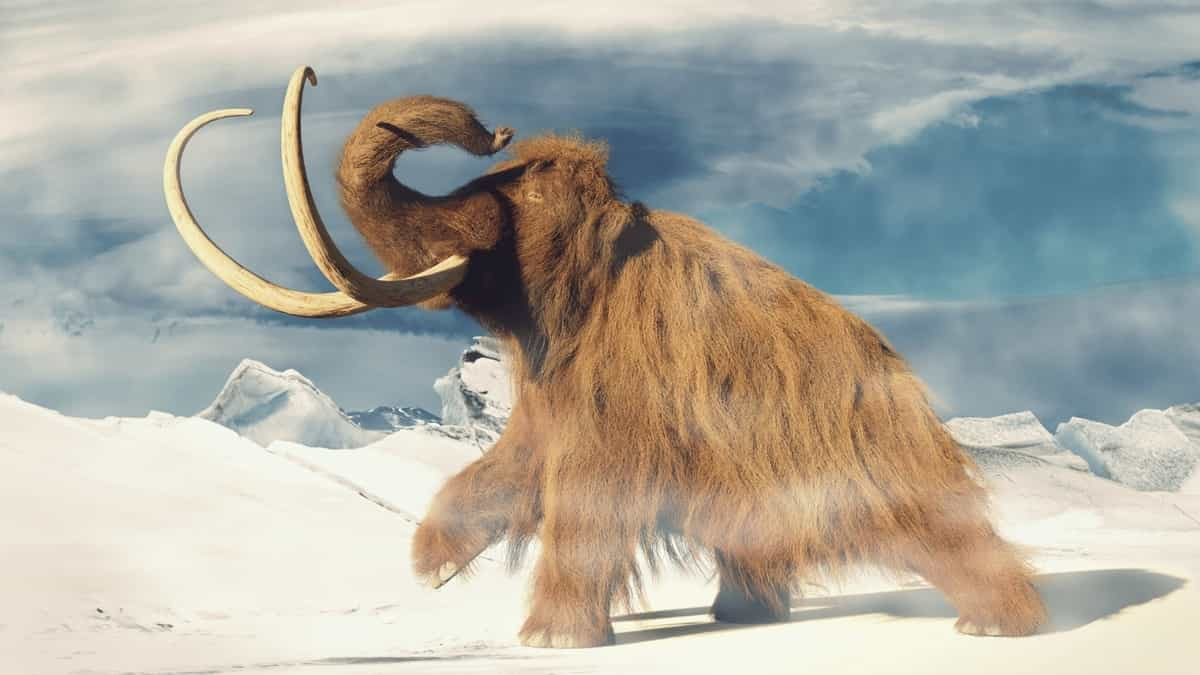
Classification
| Kingdom | Animalia |
| Phylum | Chordata |
| Class | Mammalia |
| Order | Proboscidea |
| Family | Elephantidae |
| Genus | Mammuthus |
| Species | Mammuthus primigenius |
Brief history of woolly mammoths and their significance
Woolly mammoths are prehistoric giants that roamed the earth for thousands of years. They originated in Africa around 4.8 million years ago and later migrated to Europe, Asia, and North America. Woolly mammoths played a significant role in shaping the environments in which they lived, maintaining grasslands, contributing to soil turnover, and providing food and resources for predators and scavengers.
These creatures were well adapted to cold environments, with long shaggy hair, a hump of fat on their backs, and a unique set of teeth adapted for grinding down tough vegetation. Their large tusks were used for defense and digging, and their foraging and grazing habits allowed them to travel long distances in search of food.
Woolly mammoths coexisted with humans for thousands of years until their eventual extinction around 4,000 years ago. The reasons for their extinction are still debated, but it is likely due to a combination of factors, including climate change and hunting by early humans.
Despite their extinction, woolly mammoths continue to capture our imaginations and have significant scientific and cultural significance. The study of woolly mammoths has provided valuable insights into climate change and evolution, and ongoing efforts to study and potentially revive these creatures through genetic engineering are a testament to their enduring legacy.
Physical Characteristics
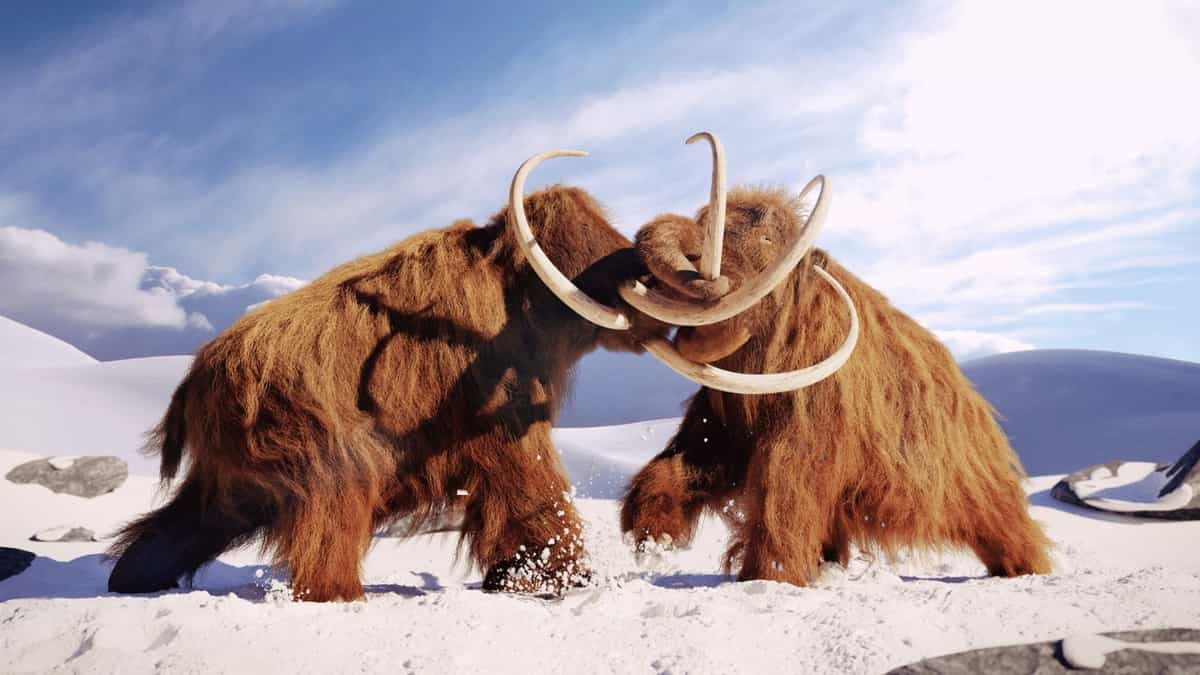
Adaptations to cold environments: long shaggy hair, hump of fat on their backs
Woolly mammoths were well adapted to survive in cold environments, such as the ice age tundras of Europe, Asia, and North America. One of their most distinctive physical characteristics was their long shaggy hair, which helped to insulate them against the harsh cold temperatures. The hair was up to three feet long and was a mix of coarse outer hairs and soft, downy underfur.
In addition to their hair, woolly mammoths had a hump of fat on their backs, which provided additional insulation and stored energy for lean times when food was scarce. This hump was composed of fat cells and connective tissue and could weigh up to 300 pounds.
Together, these adaptations allowed woolly mammoths to survive in environments with temperatures as low as -40°C (-40°F). They were also able to traverse snowy landscapes and forage for food in icy conditions. These adaptations played a significant role in the success and longevity of woolly mammoths, enabling them to thrive for thousands of years in some of the harshest environments on Earth.
Large tusks for defense and digging.
Woolly mammoths had two enormous tusks that could reach up to 16 feet in length and weigh as much as 220 pounds each. These tusks were one of the most recognizable features of woolly mammoths and served multiple purposes.
First and foremost, the tusks were used for defense. Woolly mammoths lived in a time when predators such as saber-toothed cats, wolves, and bears were common. The tusks were used to fend off attacks from these predators, as well as to establish dominance within their own social groups.
The tusks were also used for digging. Woolly mammoths had a unique set of teeth adapted for grinding down tough vegetation, and their tusks were used to dig through snow and ice to reach the vegetation below. They were also used to dig for water in dry environments, which was especially important during the summer months.
Interestingly, the tusks of male and female woolly mammoths were different in shape and size. Male tusks tended to be larger and more curved, while female tusks were straighter and more slender. This difference in tusk shape may have played a role in social hierarchies and mate selection.
Overall, the large tusks of woolly mammoths were essential for their survival and played a crucial role in their day-to-day activities, from defense to foraging. Their impressive size and strength continue to captivate us and provide valuable insights into the lives of these ancient creatures.
Unique set of teeth adapted for grinding down tough vegetation.
Woolly mammoths had a unique set of teeth adapted for grinding down tough vegetation, which was a crucial adaptation for their survival in the harsh environments in which they lived. Their molars were large and flat, with ridges of enamel that formed a series of grinding surfaces. These teeth were continuously growing and being worn down, allowing woolly mammoths to effectively grind down tough vegetation such as grasses, sedges, and woody shrubs.
The unique tooth structure of woolly mammoths was a result of their diet, which consisted mostly of fibrous plant material. These teeth were able to withstand the wear and tear of this tough diet, allowing woolly mammoths to consume a wide variety of plants and to travel long distances in search of food.
Interestingly, the shape of the teeth varied between different species of mammoths, and even within the same species, the teeth of different individuals could vary. This variation was likely due to differences in diet, climate, and other factors that influenced tooth wear and shape.
The study of mammoth teeth has provided valuable insights into the diets and behaviors of these ancient creatures, as well as into the environmental conditions in which they lived. By analyzing the isotopic composition of tooth enamel, scientists have been able to reconstruct the diets and migration patterns of woolly mammoths, shedding light on their interactions with their environments and other species.
Habitat and Distribution
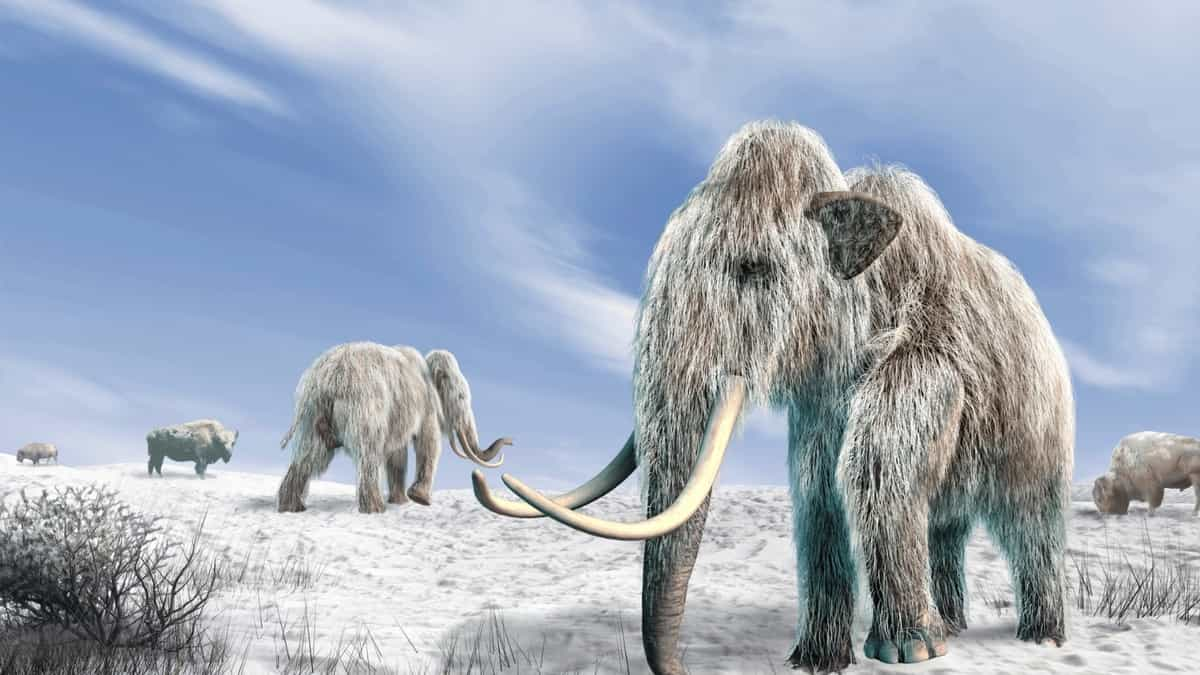
Originated in Africa around 4.8 million years ago
The woolly mammoth is a species of mammoth that originated in Africa around 4.8 million years ago. The ancestors of woolly mammoths migrated from Africa to Europe and Asia about 2.5 million years ago, where they evolved into several different species, including the woolly mammoth.
The woolly mammoth’s evolutionary history is complex and intertwined with the history of the Earth’s climate. As the climate changed over time, so did the habitats and ecological niches of mammoths. Woolly mammoths evolved in response to changing environmental conditions, such as the spread of grasslands, the development of permafrost, and the growth and retreat of glaciers.
Despite their origin in Africa, woolly mammoths are perhaps best known for their existence during the last ice age, which occurred from about 110,000 to 11,700 years ago. During this time, woolly mammoths lived in the tundras of Europe, Asia, and North America, where they were well adapted to the harsh cold temperatures and icy conditions.
The woolly mammoth’s evolutionary history is a fascinating story that provides valuable insights into the complex interactions between species and their environments over millions of years. Studying the evolution and ecology of woolly mammoths is not only scientifically interesting but can also help us understand the challenges that species face as they adapt to changing environments and the consequences of their extinction.
Migration to Europe, Asia, and North America
The migration of woolly mammoths from Africa to Europe, Asia, and North America occurred over millions of years and was driven by a variety of factors, including changes in climate, geology, and vegetation.
The first ancestors of woolly mammoths migrated out of Africa about 2.5 million years ago, spreading across Eurasia and evolving into several different species. The woolly mammoth, specifically, is believed to have evolved in Siberia about 400,000 years ago, during a period of glaciation when the climate was colder and drier than it is today.
As the ice sheets expanded and contracted over time, the range of woolly mammoths also shifted, with populations moving north and south in response to changes in temperature and vegetation. During periods of glaciation, woolly mammoths would have lived in areas that are now covered by ice sheets, such as the Bering Strait between Siberia and Alaska.
When the ice sheets retreated during interglacial periods, woolly mammoths migrated northward into newly exposed areas, where they were able to thrive in the grassy tundras that had replaced the icy landscapes. They also spread southward into areas that are now covered by forests and grasslands, such as Europe and North America.
The migration of woolly mammoths across the globe was a remarkable feat of adaptation and survival. By moving into new environments and evolving new traits, they were able to persist for millions of years and become one of the most successful large mammals of the ice age. Today, the woolly mammoth is extinct, but its legacy lives on in the ecosystems that it helped to shape and in the scientific discoveries that it continues to inspire.
Adaptation to different climates and landscapes
The woolly mammoth was a highly adaptable species that was able to survive in a variety of different climates and landscapes. One of the most remarkable aspects of woolly mammoth adaptation was their ability to tolerate extreme cold and dryness. This allowed them to thrive in the tundras of Siberia and North America, which were covered in ice and snow for much of the year.
To cope with the harsh conditions of their environment, woolly mammoths evolved a variety of adaptations. Their most iconic adaptation was their long, shaggy hair, which provided insulation against the cold and protection from the wind and snow. They also had a thick layer of subcutaneous fat, which helped to keep them warm and provided a source of energy during times of scarcity.
In addition to their adaptations for cold weather, woolly mammoths also had adaptations for living in different landscapes. They had large, curved tusks that they used for digging up vegetation from under the snow and ice. They also had a unique set of teeth that were adapted for grinding down tough vegetation, such as grasses and sedges, which were the main food sources in their tundra habitat.
Despite their adaptations, woolly mammoths were not restricted to tundra habitats. Fossil evidence suggests that they were also able to survive in more temperate environments, such as forests and grasslands. In these environments, they would have had to adapt to different types of vegetation and different predators, such as wolves and saber-toothed cats.
Overall, the adaptability of woolly mammoths was a key factor in their success as a species. Their ability to tolerate extreme cold and dryness, and to adapt to different types of vegetation and landscapes, allowed them to survive for millions of years in a constantly changing world. Today, we can learn from their adaptations and use them to better understand the challenges that species face as they adapt to changing environments.
Behavior and Social Structure
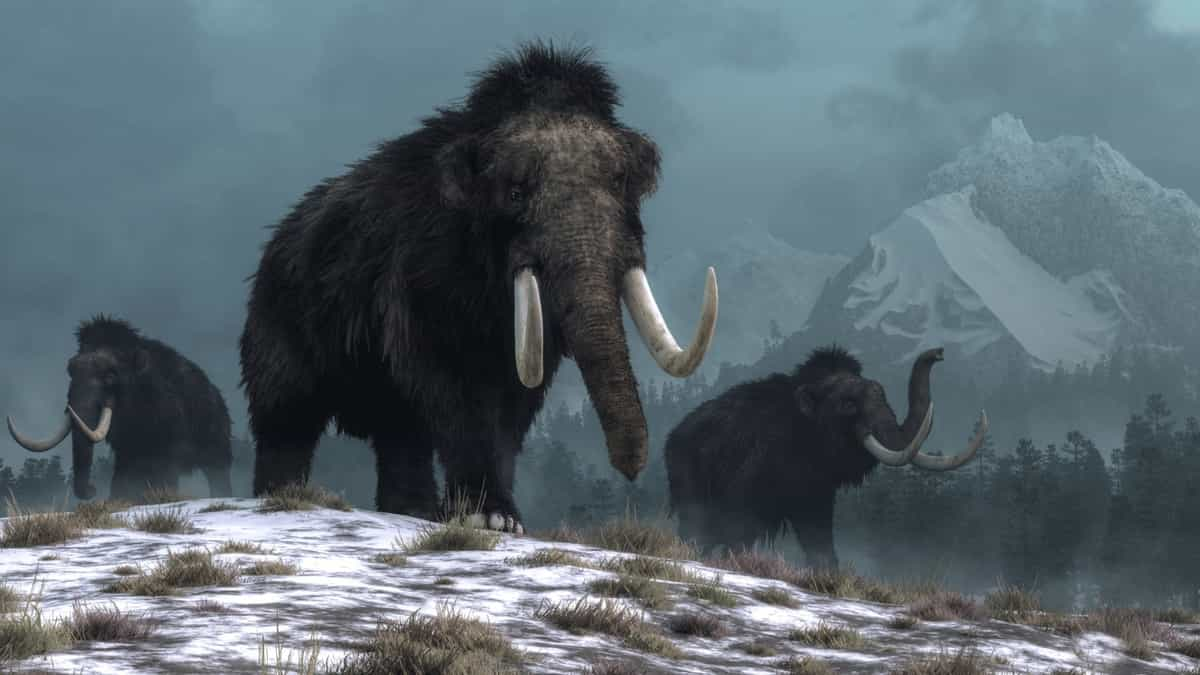
Grazing and foraging habits
Woolly mammoths were herbivores with a varied diet, grazing on grasses and sedges in the tundra and foraging on leaves and shrubs in forests and grasslands. Their grazing and foraging habits were influenced by a variety of factors, including the availability of food, the season, and the climate.
In the tundra, woolly mammoths would have grazed on a variety of grasses and sedges that grew in the open areas between the snow and ice. They were able to use their long, curved tusks to dig up vegetation from under the snow, allowing them to access food even during the winter months. During the summer, they would have roamed the tundra in search of fresh grasses and sedges to eat.
In forests and grasslands, woolly mammoths would have foraged on leaves, shrubs, and other types of vegetation. They would have used their unique set of teeth to grind down tough vegetation and extract nutrients from it. They also would have browsed on the leaves and twigs of trees, using their trunks to reach high branches.
The grazing and foraging habits of woolly mammoths were important in shaping the ecosystems they lived in. They would have played a key role in maintaining the balance between vegetation and herbivores, which in turn influenced the populations of predators and scavengers in the ecosystem. Their grazing and foraging habits also would have influenced the distribution and abundance of different types of vegetation, which in turn would have influenced the distribution and abundance of other herbivores and predators.
Overall, the grazing and foraging habits of woolly mammoths were an important part of their biology and ecology. Their ability to adapt to different types of vegetation and habitats allowed them to thrive in a variety of environments, making them one of the most successful large mammals of the ice age.
Communication and social hierarchies
Woolly mammoths were social animals that lived in herds, which were often led by a dominant female known as the matriarch. Within the herd, there were complex social hierarchies that were maintained through a variety of communication methods.
One way that woolly mammoths communicated with each other was through vocalizations. They had a range of calls and trumpets that they used to communicate with other members of their herd, including warning calls to alert others of danger, and calls to signal aggression or submission.
Another way that woolly mammoths communicated was through body language. They would use their trunks and tails to signal their intentions and emotions, such as raising their trunks in a show of dominance or flapping their ears as a warning sign.
Social hierarchies within the herd were established through a variety of means, including physical dominance, age, and social experience. Dominant females would often lead the herd and would use their physical strength and social skills to maintain their position of power. Younger and less experienced individuals would often occupy lower positions in the hierarchy and would need to learn the social norms and communication methods of the herd to navigate their way up the social ladder.
Overall, the communication and social hierarchies of woolly mammoths were important in shaping their social dynamics and behavior. Their ability to communicate with each other allowed them to coordinate their activities and respond to threats, while their social hierarchies helped to maintain order within the herd and ensure the survival of the group.
Migration patterns
Woolly mammoths were a highly adaptable species that were able to migrate across vast distances in search of food and suitable habitats. Their migration patterns were influenced by a variety of factors, including changes in climate, availability of food, and competition from other herbivores.
During the ice age, the climate of the Earth was characterized by periods of intense cold known as glaciations, followed by warmer interglacial periods. As the climate changed, woolly mammoths would migrate to different regions in search of food and shelter. For example, during the peak of the last glaciation, woolly mammoths migrated southward into areas that are now covered by the North Sea and the English Channel, where they found refuge from the harsh conditions of the northern tundra.
In addition to climate, the migration patterns of woolly mammoths were also influenced by the availability of food. They would often follow the growth of vegetation as it shifted across the landscape in response to changing climate conditions. For example, during the summer months, woolly mammoths in the tundra would migrate to higher elevations where grasses and sedges were still growing, while during the winter months they would move to lower elevations where they could access shrubs and lichens.
Competition from other herbivores also played a role in shaping the migration patterns of woolly mammoths. They would often avoid areas where there were large populations of other herbivores, such as reindeer or bison, to reduce competition for food and resources.
Overall, the migration patterns of woolly mammoths were complex and dynamic, shaped by a variety of factors that changed over time. Their ability to adapt to changing environments and migrate across vast distances was a key factor in their success as a species during the ice age.
Extinction
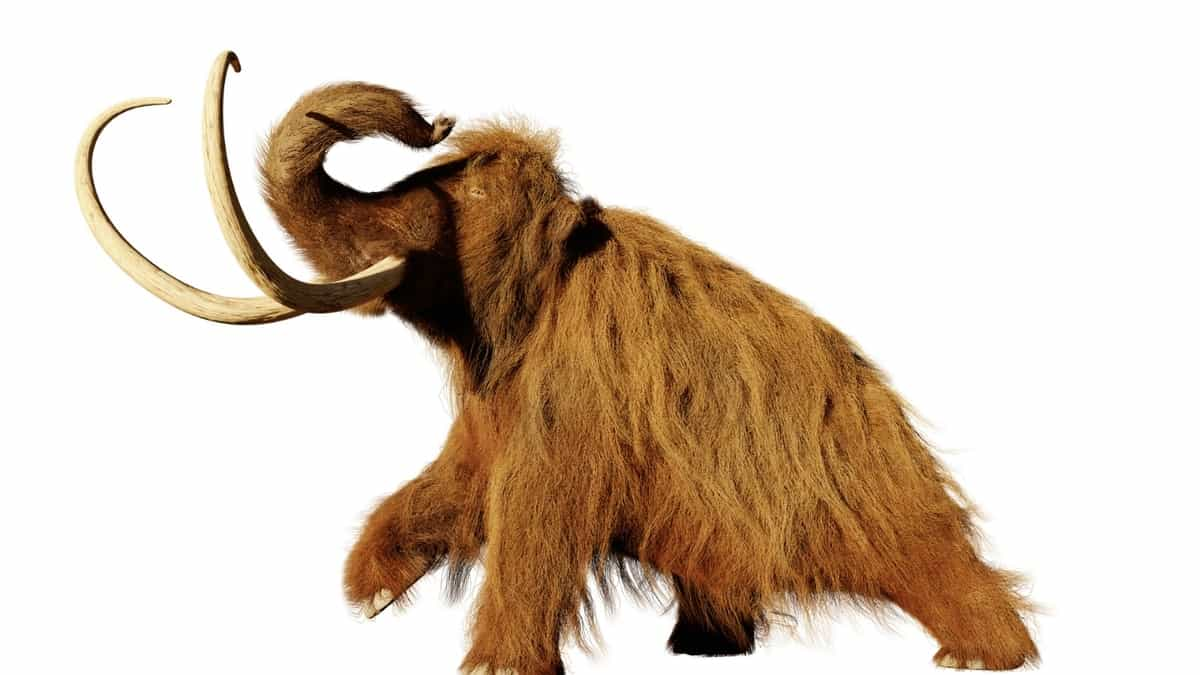
Climate change and environmental factors
Climate change and environmental factors played a significant role in the evolution and extinction of woolly mammoths. As a species adapted to cold and arid environments, they were highly sensitive to changes in temperature, precipitation, and vegetation patterns.
During the ice age, the Earth experienced significant fluctuations in climate, with periods of intense cold and glaciation followed by warmer interglacial periods. Woolly mammoths were able to adapt to these changes by migrating to different regions in search of food and shelter. However, as the Earth’s climate began to warm and the ice sheets receded, their habitat began to shrink, leading to a decline in their population.
In addition to climate change, woolly mammoths were also impacted by other environmental factors, such as the availability of food and water. As the climate changed, the vegetation patterns in their habitat also shifted, leading to changes in the availability and quality of their food sources. This, in turn, impacted their ability to reproduce and maintain healthy populations.
Other environmental factors, such as disease and predation, also played a role in the decline of woolly mammoths. For example, they were susceptible to diseases carried by parasites, such as the Siberian tapeworm, which could cause fatal infections. They were also preyed upon by predators such as wolves and humans.
Overall, climate change and environmental factors played a significant role in the evolution and eventual extinction of woolly mammoths. Their ability to adapt to changing environments allowed them to survive for thousands of years, but ultimately, they were unable to overcome the combination of environmental challenges that they faced.
Hunting and human impact
Hunting and human impact were major factors in the extinction of woolly mammoths. Humans are believed to have first encountered woolly mammoths around 30,000 years ago, and over time, they became an important source of food, clothing, and materials for early human societies.
Early humans hunted woolly mammoths using a variety of techniques, including spear throwing and ambush hunting. They also used their bones and tusks to create tools, weapons, and art. The hunting of woolly mammoths likely had a significant impact on their population, particularly as human populations grew, and hunting methods became more efficient.
In addition to direct hunting, human impact on the environment may have also contributed to the decline of woolly mammoths. For example, early humans may have altered the landscape by burning grasslands to improve hunting grounds, which could have impacted the vegetation that woolly mammoths relied upon.
As human societies developed and spread across the globe, woolly mammoth populations continued to decline. By around 10,000 years ago, they had disappeared from much of their former range, including North America and most of Europe. The last known population of woolly mammoths lived on Wrangel Island in the Arctic Ocean until around 4,000 years ago, when they too went extinct.
Today, the legacy of woolly mammoths lives on in the form of fossils, ancient artwork, and genetic material. Studies of their DNA have provided insights into their physical appearance, behavior, and adaptations to their environment, while their remains continue to inspire scientific curiosity and fascination.
Other possible causes
In addition to hunting, human impact, and climate change, there are other possible causes that may have contributed to the extinction of woolly mammoths.
One theory is that disease may have played a role in their decline. Woolly mammoths were susceptible to several diseases, including parasitic infections and viral illnesses. As their populations dwindled and they became more isolated, they may have become more vulnerable to epidemics.
Another possibility is that changes in the availability and quality of their food sources may have impacted their ability to survive. As the climate changed and vegetation patterns shifted, the quality and quantity of the food available to woolly mammoths may have declined, making it more difficult for them to survive and reproduce.
Finally, it is possible that genetic factors may have contributed to the extinction of woolly mammoths. As their populations became more isolated, they may have experienced a loss of genetic diversity, which could have made them more vulnerable to disease and other environmental stresses.
Overall, the extinction of woolly mammoths was likely the result of a combination of factors, including hunting, human impact, climate change, disease, and genetic factors. While the precise cause of their decline may never be fully understood, the legacy of these magnificent creatures lives on in the form of fossils, artwork, and genetic material, providing us with important insights into the history and evolution of life on our planet.

